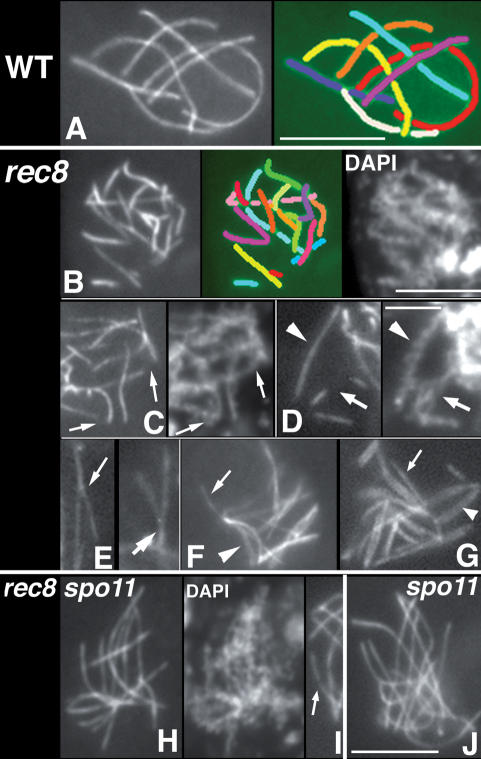Figure 3.
Spo76-GFP staining of wild-type and rec8Δ axes. (A) Wild-type pachytene nucleus with seven bivalents plus corresponding drawing (shown at right). (B) rec8Δ pachytene nucleus with 16 Spo76-GFP segments, drawn with different colors (no correspondence with the wild-type colors) and corresponding DAPI (shown at right). In A and B, each line has its own color, but some are discontinuous to indicate that they lie in back of other chromosomes. (C–G) rec8Δ. (C) Arrows point to two gaps in Spo76-GFP lines on corresponding continuous axes by DAPI staining (shown at right). (D) Arrow points to a Spo76 gap that corresponds to three DAPI threads (arrow, right) indicating both local asynapsis and chromatid-cohesion defect; for comparison, arrowheads point to uninterrupted Spo76 line and DAPI. (E) Two examples of forks (arrows). At both zygotene (F) and early pachytene (G), asynapsed axes (arrows) and synapsed double Spo76 lines (arrowheads) are clearly visible. (H,I) rec8Δ spo11Δ: Spo76-GFP lines are continuous and chromatin (DAPI) is less diffuse than in rec8Δ (compare with DAPI in B, but in a few cases, Spo76 gaps remain (arrow in I). (J) spo11Δ single mutant at mid-prophase. Bars, 5 μm.

